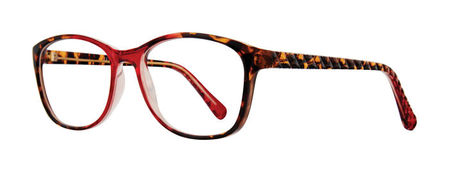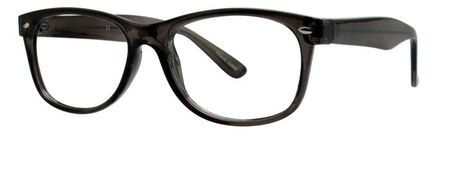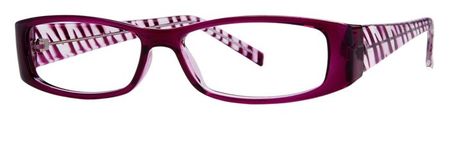Reading Glasses Syracuse City - Awareness of Eye related Issues and Age
Syracuse is a metropolis in and the county seat of Onondaga County, New York, United States. It is the fifth-most populous metropolis in the nation of New York following New York City, Buffalo, Yonkers and Rochester. At the 2020 census, the metropolis's population turned into 148,620 and its metropolitan location had a population of 662,057. It is the monetary and academic hub of Central New York, a place with over 1,000,000 inhabitants. Syracuse is likewise well-furnished with conference sites, with a downtown conference complex. Syracuse was named after the classical Greek metropolis Syracuse, a metropolis at the eastern coast of the Italian island of Sicily. Historically, the metropolis has functioned as a main crossroads during the last centuries, first among the Erie Canal and its department canals, then of the railway network. Today, Syracuse is on the intersection of Interstates 81 and 90. Its airport is the most important in Central New York.
Syracuse is home to Syracuse University, State University of New York (SUNY) Upstate Medical University, SUNY College of Environmental Science & Forestry, and Le Moyne College. Formerly a production center, Syracuse's economic system has confronted demanding situations over the last many years as commercial jobs have left the location. The quantity of neighborhood and nation authorities jobs additionally has been declining for numerous years. Syracuse's pinnacle employers now are in the main in better education, research, fitness care and services; a few high-tech productions remain. University Hill is Syracuse's fastest-developing neighborhood, fueled by expansions via the means of Syracuse University and Upstate Medical University (a department of the State University of New York), in addition to dozens of small clinical workplace complexes.
What Causes Age-Related Eye Changes?
The lens of your eye is a versatile disk that adjustments form to awareness mild onto the retina. Over time, the lens clearly turns thicker and much less bendy due to adjustments to the proteins in the lens. The muscle fibers connected to the lens additionally alternate with age, making it much less bendy. The end result is a harder, greater inflexible lens that can't well refract mild and awareness close to objects. This ends in blurred vision while searching at near objects, a circumstance technically referred to as presbyopia. Age related eye changes may cause vision losses. So readers are the best option for clear vision for all type age groups.
What If My Eyes Are Already Corrected?
In many cases, people already put on glasses or touch lenses to accurately reflect their vision. Whether you had 20/20 eyesight to your more youthful years or had laser surgical treatment to accurate your vision, age-associated presbyopia may also have an effect on you. The circumstance frequently develops after the age of 40, despite the fact that a few human beings hold best eyesight into older adulthood.
What to Look for in Reading Glasses
Reading glasses accurately presbyopia via means of assisting mild well replicate onto your retinas, enhancing your awareness of close objects. Typically, reading glasses are worn best while reading, doing needlework, or acting duties which require focusing on substances near up. Some reading glasses are complete frames, which should be taken on and rancid while transitioning from near-up work to distance vision. Others are 1/2 of frames, which allow you to shift your gaze as it should be to gain first-rate vision.
Although drug shops or even supermarkets usually inventory reading glasses, it's far more critical to get an intensive eye examination earlier than creating a purchase. An eye care company can discover different age-associated adjustments that can be affecting your vision. Prescription reading glasses can account for variations among your eyes in addition to astigmatism. Consult your eye physician for an intensive optometry examination earlier than making an investment in a couple of reading glasses.
History of Eyeglasses
The inventor of the primary spectacle lenses is unknown. Roman tragedian Seneca (four BC -65AD) is stated to have used a tumbler globe of water as a magnifier to read ''all of the books of Rome''. It's been said that clergymen in the center for a long time used readers' spheres as reading glasses to read. The thirteenth century Venetians readers blowers are known to have produced reading stones fabricated from stable readers that turned into handheld, single lens-kind frames fabricated from horn or wood. These reading stones have been just like hand held magnifying lenses of today.
Most historians accept as true that the primary shape of eyeglasses turned into produced in Italy via the means of clergymen or craftsmen in Pisa (or possibly Venice) around 1285-1289. These magnifying lenses for reading have been fashioned like small reading glasses and set into bone, metal, or leather-based mountings that might be balanced at the bridge of the nose.
The first known inventive illustration of the usage of eyeglasses turned into Tommaso da Modena's portrait in 1352. His portrayal depicts clergymen reading and writing manuscripts. One monk makes use of reading glasses, however some other reading glasses perched on his nose. The first eyeglasses can best be used to rectify hyperopia and presbyopia. And the ones eyeglasses for myopia regarded tons later, sometime in the early 1400's.
Eyeglasses History
The first useful resource, referred to as a reading stone, was invented around a thousand AD. The reading stone turned into a tumbler sphere that turned into laid on pinnacle of the reading fabric to exaggerate the letters. The first wearable eyeglasses were invented around 1284 in Italy. It is an idea that Salvino D'Armate turned into their inventor.
Origins and History of Reading Glasses
The earliest era of magnification of photos dates back to round a thousand A.D. The first visible useful resource units have been reading stones. Those who had invented them found that convex fashioned readers may want to enlarge the photograph of a small object. These reading stones have been advanced to assist clergymen in reading and writing. The clergymen with presbyopia used reading stones that have been positioned at the reading fabric as reading glasses. In the 9th century Abbas Ibn Firnas advanced a manner to supply very clean reading readers and he's stated to be the primary to apply corrective lenses. These glasses might be fashioned and polished into spherical rocks. The Venetians began to make reading stones out of readers that have been positioned at the reading material. They later discovered to supply them with reading readers lenses that might be held in the front of the attention rather than being onto the text. The first spectacles with its body and sidebars were in all likelihood made in 1268 in Pisa, Italy, however it is now no longer known who invented them. In this modern era, eyeglasses, reading glasses and safety glasses are very well known by the users. There are huge collections of reading glasses available with different patterns and sunglasses like progressive reading glasses, single vision reading glasses, reading glasses with bifocals and reading sunglasses etc. ReadersUSA is the best for choosing the best readers from readersusa.com.






